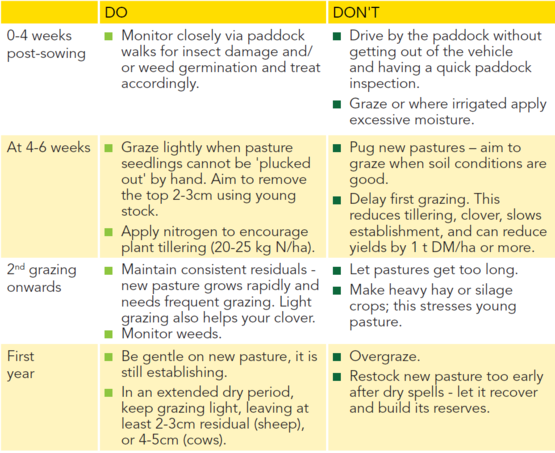Managing new pastures
It takes 12 months before a pasture can be considered to be successfully established.Good management gets the best out of a new pasture and will help it persist.
12 months for establishment
A pasture should not be considered successfully established until you have a dense, well tillered pasture that has survived a summer. Pasture management through this time has a major impact on its future performance.
Management of new pastures

First grazing
The most critical grazing is the first ‘nip-off’ and should occur as soon as the baby grass plants do not pull out of the ground. Light grazing promotes grass tillering and growth. Early grazing also benefits slower establishing species, like clover and herbs, allowing light to reach them. Young clover plants are usually smaller, and susceptible to shading. If your seed is treated, check the grazing withhold period. For AGRICOTE Grass, this is 42 days for sowing, and 21 days for undersowing.
Weed control
Monitor new pastures closely for emerging weeds. Weeds compete aggressively with young grass, clovers and herbs, reducing pasture longevity. They should be sprayed early when they are still small and easier to control (typically before or after first grazing). If you do need to spray, make sure the herbicide is safe for other sown species.
Subsequent grazings
From the second grazing onwards, new pastures grow rapidly and need frequent grazing. Apply small amounts of nitrogen to boost growth and tillering. Keep pastures relatively short to encourage ryegrass to tiller and prevent shading of clover and herbs. Don't let them get too long (>3500 kg DM/ha), or make silage in the first year.
First winter & summer
Graze new pastures carefully in periods of stress. In wet winters, protect them from treading damage. Otherwise, future DM yield and persistence will be compromised. In dry periods, do not overgraze establishing pasture.

